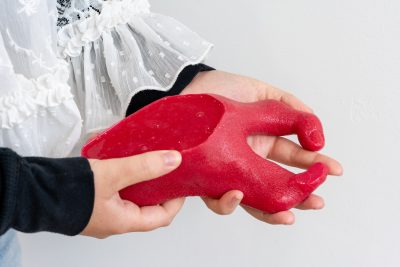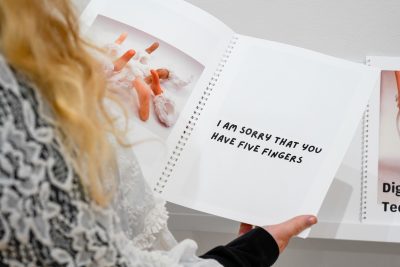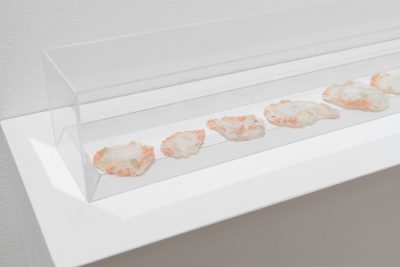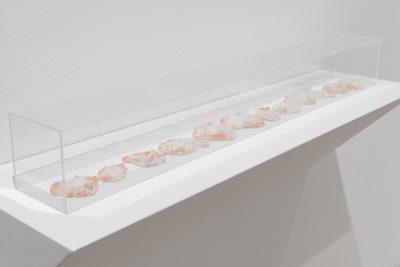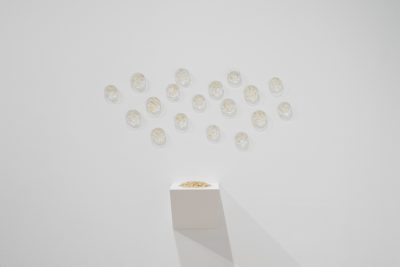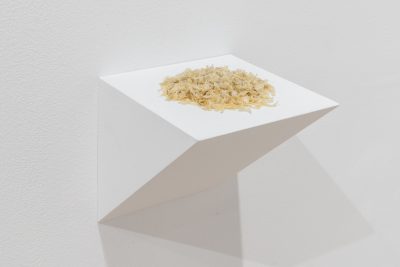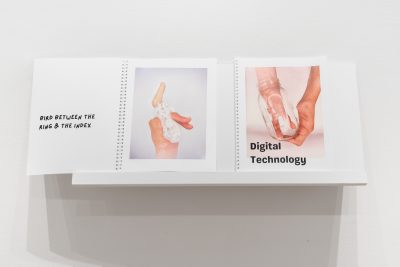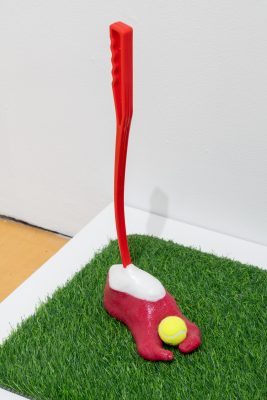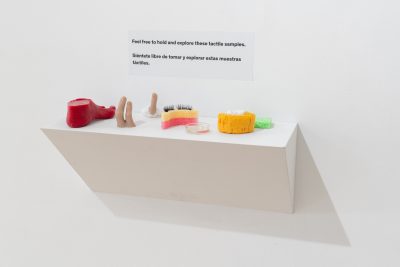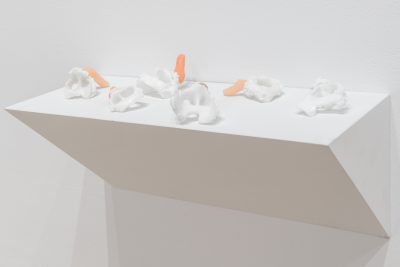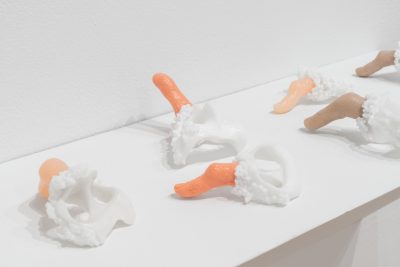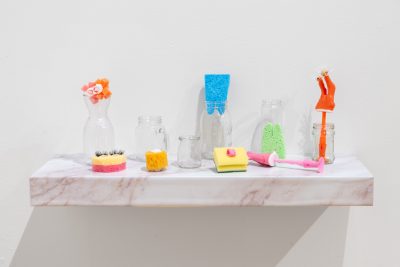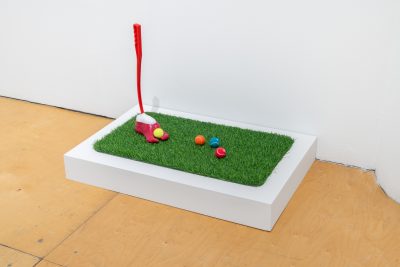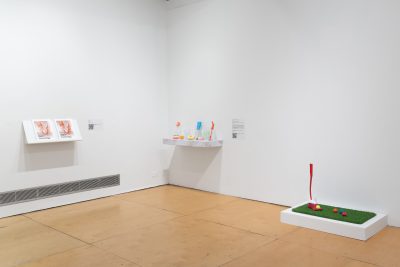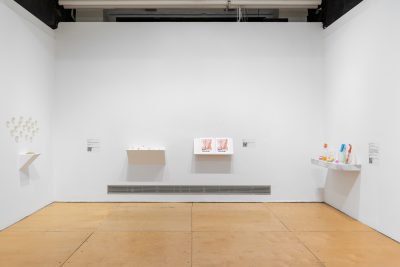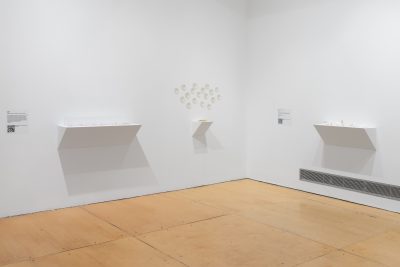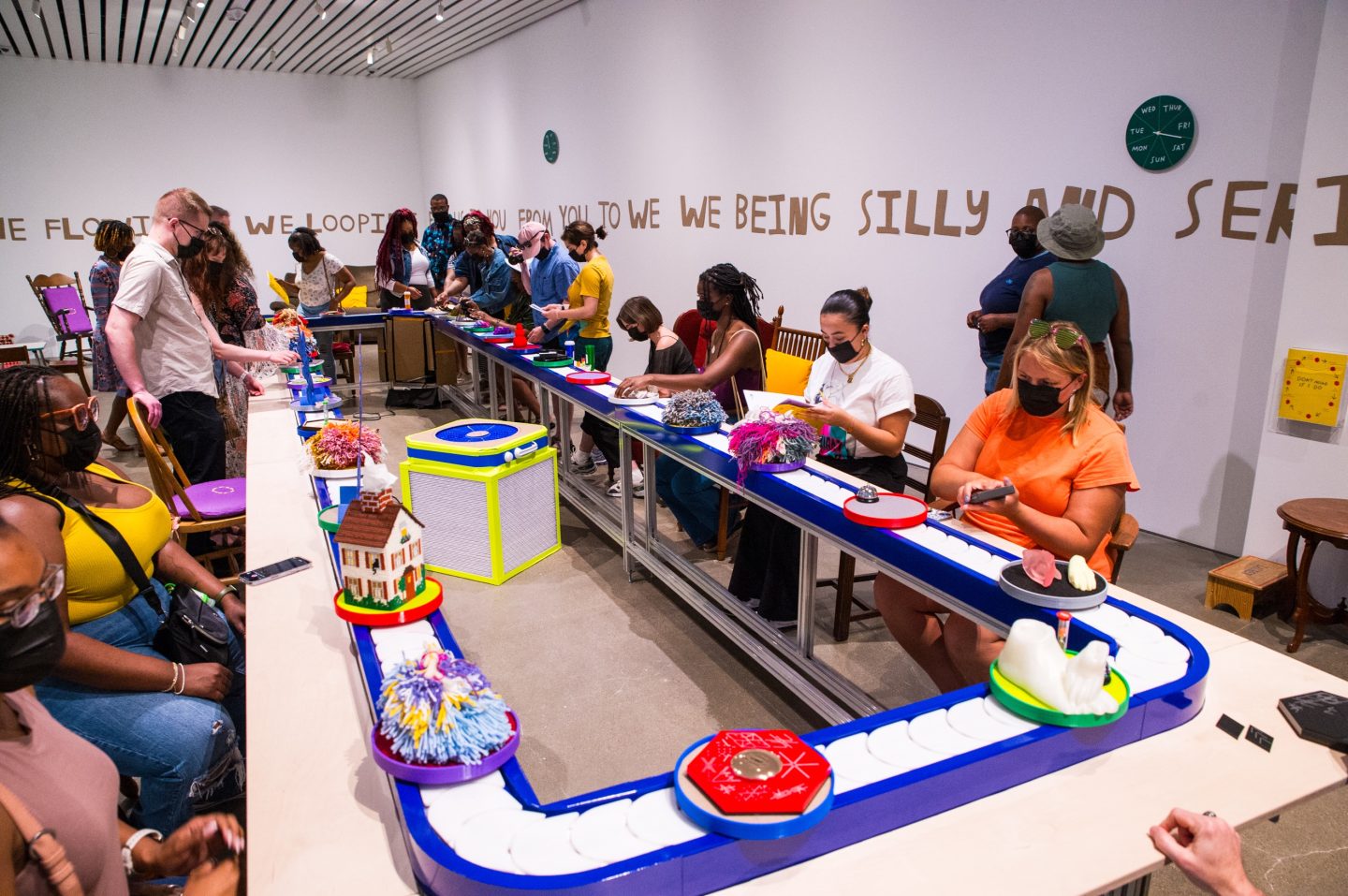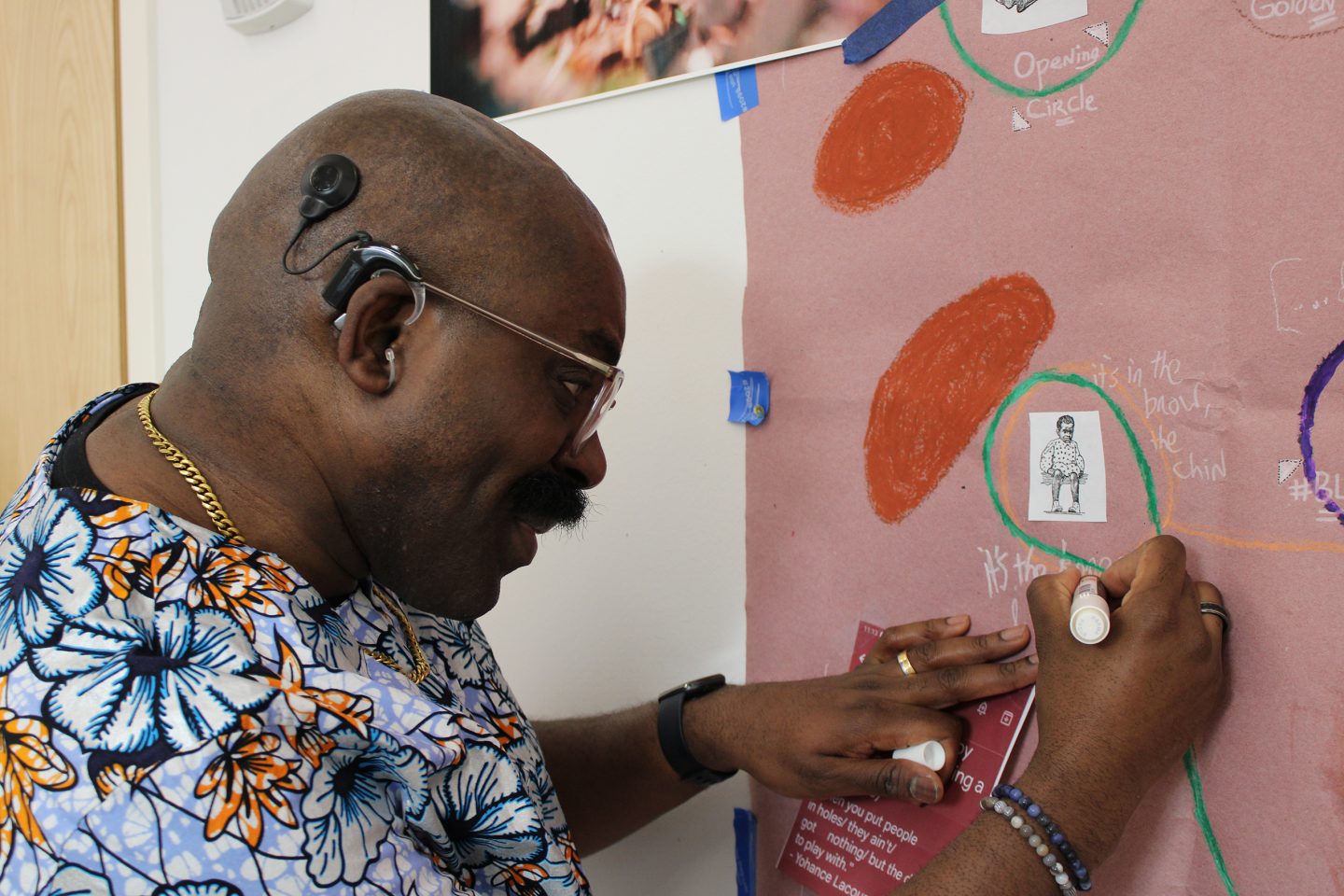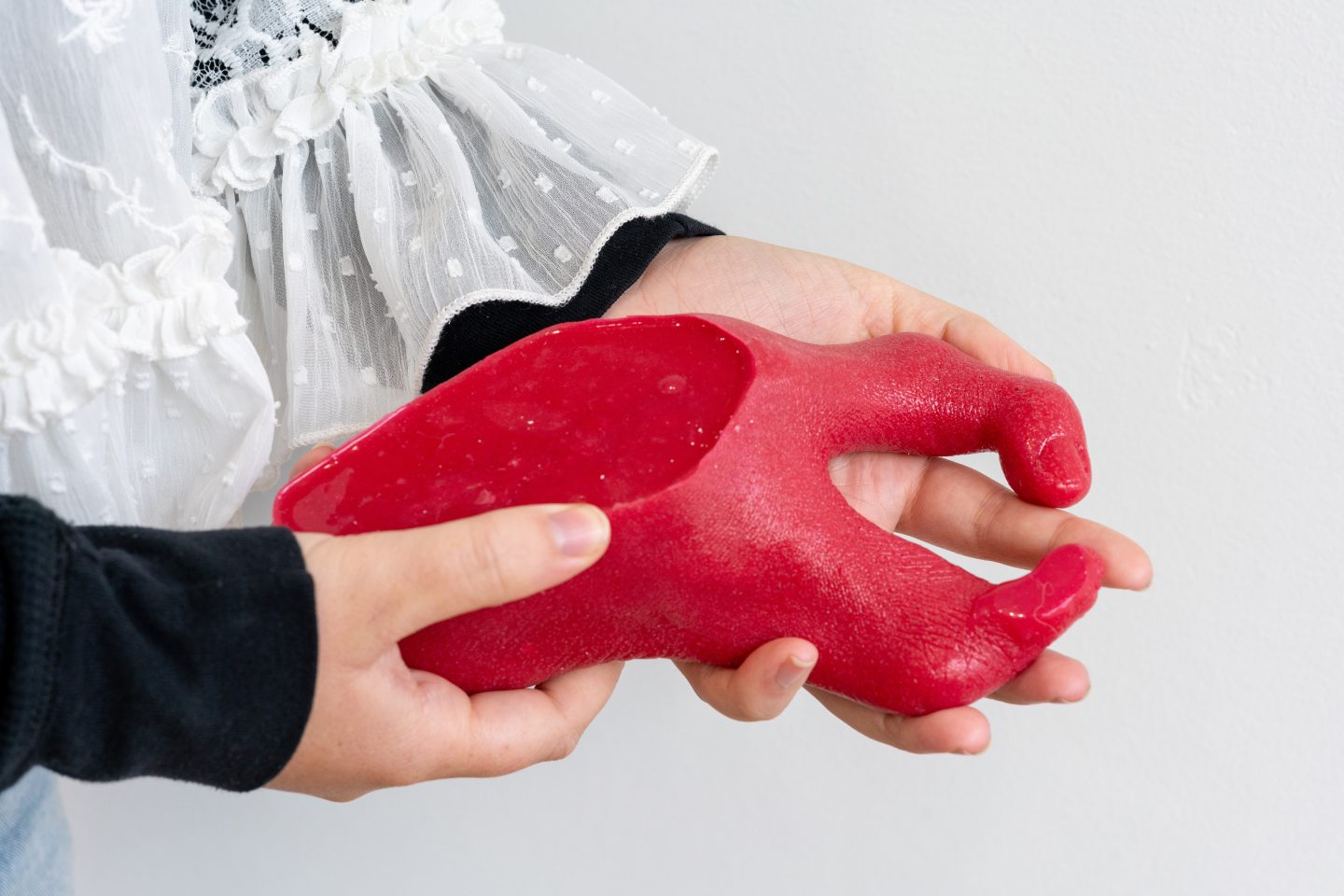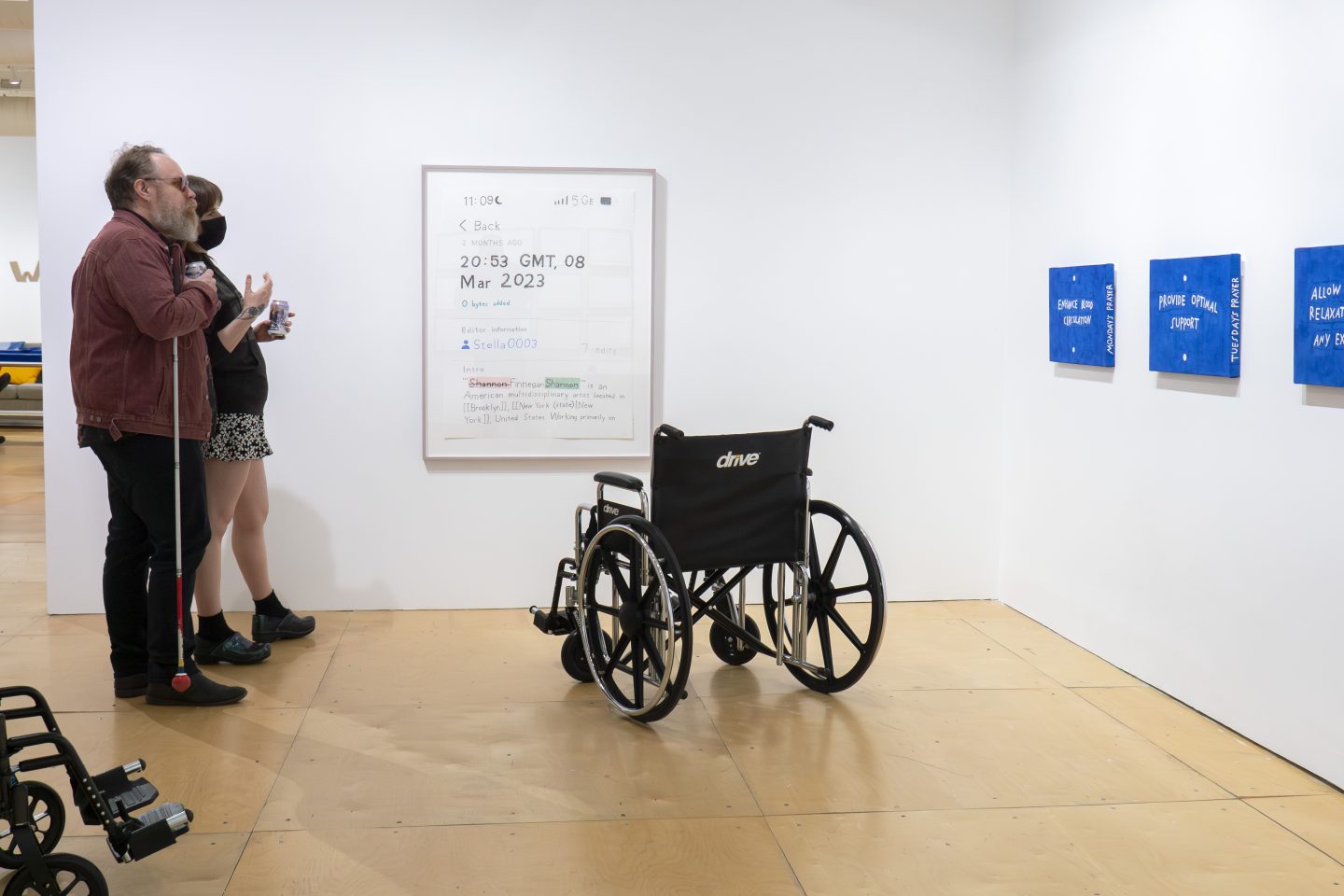Exhibitions
ABOUT THE EXHIBITION
Sandie Yi maintains an artistic practice that centers handmade wearable adornments that engage with aesthetics, ethics, and the complexities of the disabled body. She defines this wearable art as “crip couture,” which is jewelry, garments, accessories, armors, and footwear that extend beyond the uses of prosthetics, corrective, and assistive technologies deployed by the medical industry to standardize non-normative bodies. Often drawing upon industrial design, her two-digit hands and feet, and her kinship to the disabled community, Yi’s work prioritizes the disabled user’s lived experiences and insists on challenging dominant ableist ideologies.
For her first solo exhibition in Chicago, Yi reflects on how her craft produces objects and knowledge that foreground how she innovates technologies that have to do with how her body interacts with the world. “The technology I am creating for myself has to do with not adding more fingers for me to do things better. It’s to show how I use it and came up with it,” she says. The show includes a set of photographs demonstrating how she dons her couture, casts of her hands, which are used as props for displaying her jewelry, and sewn silk organza pouches holding callouses trimmed from her feet.
ABOUT
Sandie Yi is a disabled artist and disability culture worker. As a part of the Disability Art Movement, Yi’s practice, Crip Couture focuses on wearable art about the disabled bodymind. She has a Ph.D. in Disability Studies from the University of Illinois at Chicago; a MA in art therapy from SAIC, and MFA from the University of California Berkeley. She is an assistant professor in the department of art therapy and counseling at the School of the Art Institute of Chicago (SAIC). Her research interests include Disability Arts and Culture; disability fashion; accessibility design and programming for arts and cultural venues; and disability culture-informed art therapy.
ACCESS PAGE
Exhibition material can be found in plain text and in audio recordings here.
ARTISTS
Sandie Yi
SUPPORT
Support for Digital Technology is provided by a grant from the Illinois Arts Council, the Andy Warhol Foundation for the Visual Arts, the School of Art & Art History, the College of Architecture, Design, and the Arts, and the University of Illinois Chicago.


